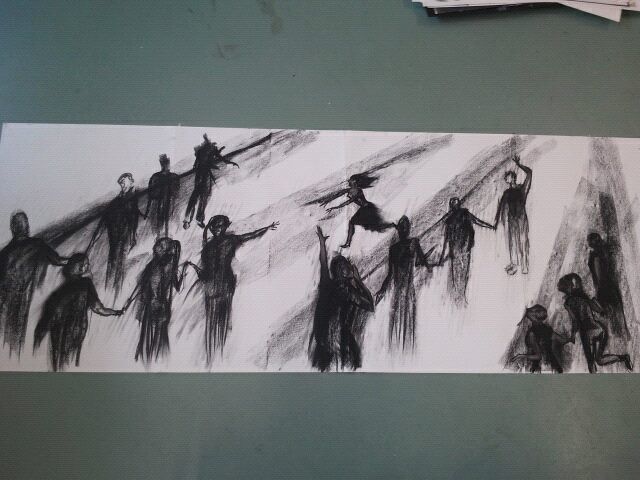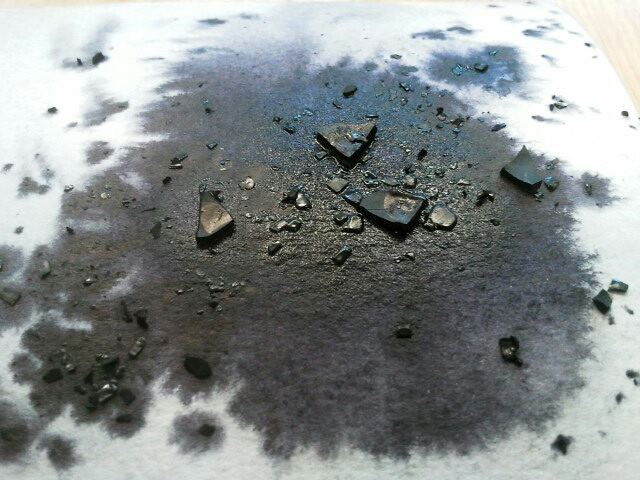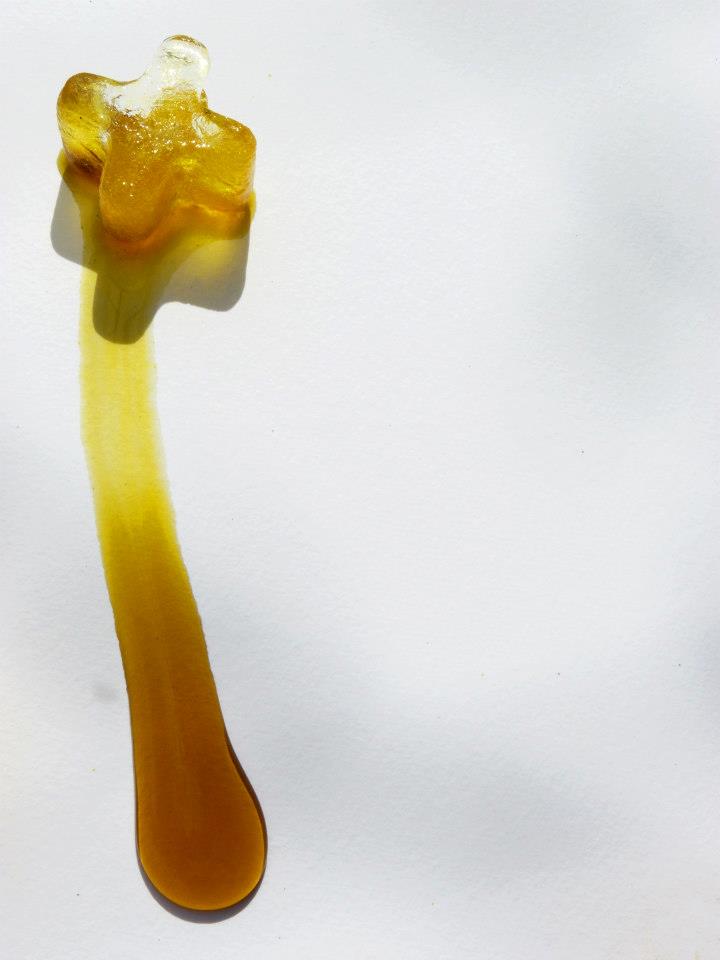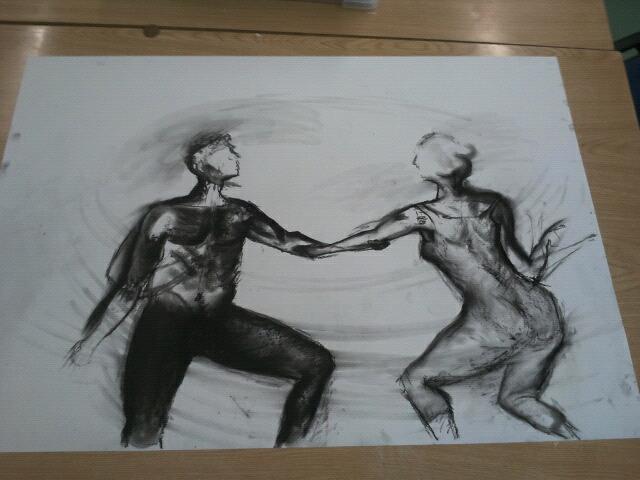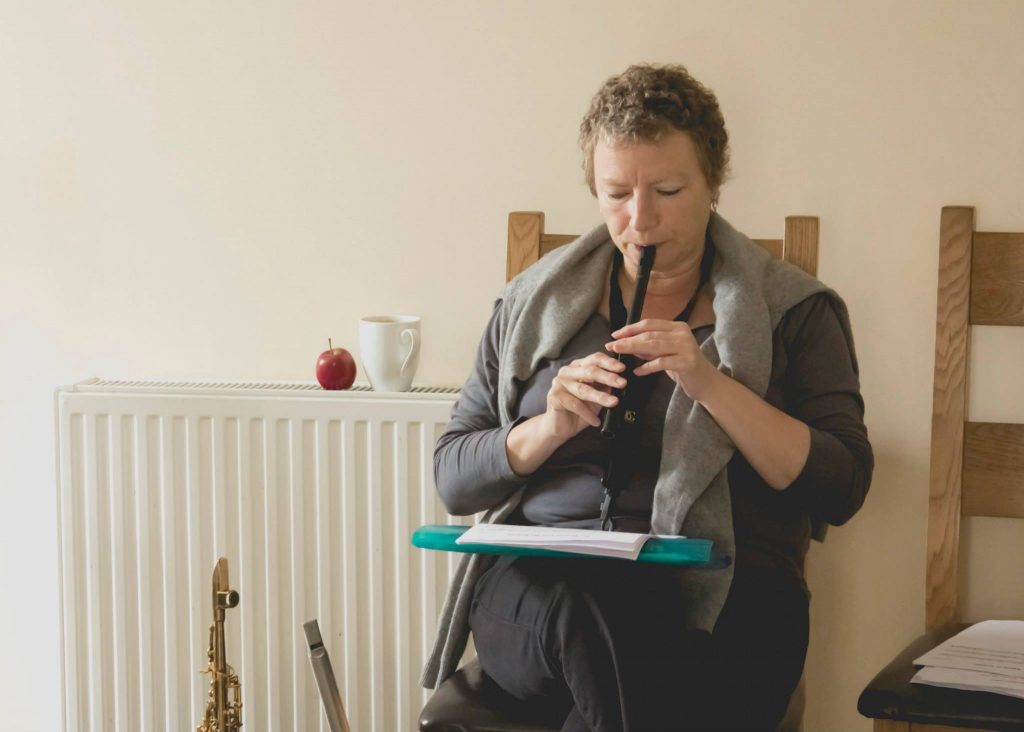Firstly I want to start by saying a huge THANK YOU to everyone who is reading and commenting on these posts on my social media, Patreon feeds and in emails. It hasn’t been easy to write, even though I feel 100% ready to share this all with you. Reliving it has somewhat taken a toll on an already tired brain, so thank you to those who have had to bear with me!
The album Kickstarter recently broke the £5K mark and I couldn’t be more delighted! After the usual (and expected) mid-campaign slump in pledges, I was starting to get quite anxious we weren’t going to make it – but you came through for me! We’re not there yet though, so please keep sharing the campaign and letting people know why it’s important to you that this album gets funded – many many thanks!
Click here to visit my album Kickstarter campaign page
I talked last week all about the practical elements of my mental health recovery journey, and I realise that I may have left many of you asking “well, where does this relate to melodeon playing?!”
I felt that my beloved melodeons and how they fit into my creative coping strategies deserved their very own blog.
Morris dancing is to blame (it always is)
Back in 2001, I was lucky enough to see a very young, fresh-out-the-field Spiers & Boden in the back room of my village pub. As a young folky myself, I hadn’t been on the scene very long at all having only taken up Morris the previous year. So to see two blokes in their 20’s strutting their funky stuff was fresh, exciting and most of all – relatable.
Their sound is still one I return to again and again when I need that boost of energy and to remember why I got into this all in the first place. Gosh, I miss them (but I hear they’re coming back?! *squeal of excitement*)
Their playing planted a seed within me that lay dormant until the first term of university in 2006. I would travel a 3 hour round trip by train to get to Widders Border Morris practise in Chepstow on a Thursday night. I asked the gaffer, Mick Widder (aka Micky Sharpz for all you tattoo enthusiasts) if I could borrow the spare red Hohner Erica that came to practise with him every week and he duly obliged. He’s to blame for everything that’s happened since!
Back in university halls, I’d wait for everyone to leave the flat and play for hours at a time. Mastering the basics of the left hand first before attempting my first tune – a mash up of Nick Nack Paddy Whack and Gloucester Hornpipe for Widders’ dance Severn Tunnel Junction. I’d got that all in a matter of weeks and started eating up the rest of the Morris repertoire. I was playing out with the side come Summer 2007.
It seemed that the melodeon was my instrument. I’d learned flute at school, played in orchestras and the university wind band but it just never quite “did it” for me as a solo instrument – and I never enjoyed practising scales! Whereas I became obsessed working out the infinite yet limited puzzle box of melodeon.
So many complexities, so little time…. (for my degree)…
I’d while away hours at a time sat on my uni bed, laying down and playing, standing up and playing, hunched over and playing… any which way and playing. I can remember the hassle I had trying to learn Jiggery Pokerwork, Jump at The Sun, and Squeezy’s Autumn Hornpipe (Hyena)… but I didn’t give up and I didn’t get frustrated. I just kept going over and over and over it, ploughing on hour after hour.
It gave my mind a freeing occupation from the world around me which at the time was too much to process. I’d frequently visit a place in my subconscious mind I call ‘The Melodeon Zone’. Where you are concentrating solely on what you are playing using all of your senses. All distractions get put aside when you’re in The Zone and great things can be achieved. But you don’t arf get a shock when your mam calls you for tea!
I started writing my own tunes through just making sounds that I found soothing. Have you ever hugged your melodeon and just enjoyed the gentle humming of the reeds? I recommend you try it. I learned a lot about the instrument through just noodling and making sounds I found pleasing and comforting.
Sometimes these sounds organise themselves into recognisable tunes, other times they stay as ideas trapped inside my phone recordings. They may remain there for years at a time.
Often, tunes come to me fully formed and ready to go. These are usually the ones that please me the most, and have something interesting about them in the way they fit on the instrument. These are the tunes which are on my album and tell the tale of a life spent hiding in music.
In music, I hid. It became my safe space.
If I wasn’t playing it, I was listening to it. I filled my trusty little iPod mini with my favourite folk, rock, film and indie and would listen endlessly on repeat. I’d even use it as a way to fall asleep at night.
Music became a way for me to block out the troublesome voices in my head. It became my focus, my passion.
If I’d have put that much concerted effort into my degree, I would’ve certainly come away with a 1st class honours! Instead, I graduated with rad Frisbee handling skills, bostin’ melodeon moves and a 2:2. I’ll take that!
Post-University Employment
My first jobs after leaving uni were temp agency jobs in the months leading up to Christmas 2009. I was still an unwell person and was running on vapours. Somehow I managed to emerge from my mental funk just enough to attend interviews, get myself up and out the door in the mornings and drive myself to work. The work was menial and required little to no brain power. It was fine to tide me by but became tiresome and uninteresting after a number of weeks.
Looking back now, I wasn’t well and yet did everything I could to carry on and seem fully functional.
A family friend got in touch to say her geophysical surveying company was hiring temporary field staff. The work would involve travel to sites around the UK and staying away from home for days at a time. Despite having zero geophysics knowledge or experience, I leapt at the opportunity! I got the job based on the fact I could walk, carry large amounts of equipment and learn fast.
I started the first week of December 2009. I had to be in the Upton-On-Severn office to start at 7am every Monday morning to pack a van and head out to site.
At the time I lived over an hour away in Kidderminster and didn’t have my own car. I can remember my first morning driving over with Mum, heading down a country lane near Upton and hitting a flood (which became a common occurrence!). Whilst I had passed my test, I wasn’t the most experienced driver having only driven at school and uni holidays. I’ll never forget reversing back down a single track lane, with ditches either side, in the pitch black with Mum screaming at me from the passenger seat!

Initially, the job was exactly what I needed. Plenty of fresh air and exercise, independence and self management. The company had plenty of work and in January 2010 I was made a permanent member of staff. I started working in the office, being trained on data processing and analysis, CAD mapping and report writing.
Over the three years I was with the company, I became a valued member of field and office staff and acquired a good number of practical skills. And I acquired a brilliant sense of direction navigating the UK motorway network too – handy for a future musician!
It wasn’t all roses…
The company had taken a real hit in the 2008 financial crisis and hadn’t fully recovered when I joined. Management was abysmal and office morale low. The field team and office team were treated very differently, with a lot of the pressure falling directly on the field team’s shoulders to meet more and more unrealistic deadlines.
Field work is incredibly physically and mentally demanding. You’re regularly sent to sites you’ve never been to before, that someone else has specd and mapped out for you (if you were lucky). It was rare to get to site and be able to get on with the survey straight away. First of all, you have to assess the site and decide the best way to set out a grid. When you’ve set out your grid, and accurately recorded each point and the landscape features it relates to, you can start by calibrating the survey equipment, set out your sight lines and off you go!
This perfect scenario was exceptionally rare! Sites weren’t nice, simple, square, north oriented, flat fields. Most often I worked in welly-sucking ploughed fields, line-munching stubble fields, knackering hills, bogs overgrown with scrub. The weather was often abysmal and the equipment not that waterproof. In fact it was often broken or functioned inefficiently. Traffic getting to site could be a nightmare. The going was tough, and yet the pressure was on to meet deadlines.
So very often you’d work a 9 hour day onsite, and then have an extra hour or so to download, dry and put equipment on charge, and then a 3 hour drive home. This became the norm during my time working for the company, and it took its toll both mentally and physically.
I worked in the field for a year with a permanent water infection which antibiotics would clear up only for it to return almost immediately. My immune system was stripped of its ability to fight off infection and I’d frequently work through colds. When you’re working all day in the middle of a field, let me tell you, you really miss the convenience of a toilet when you have a UTI (I’ll leave the details to your imagination).
Working 3 years in the field gives you too much time with your own thoughts – some good, some not so. But it was this contemplative time spent driving or walking fields day after day that brought me to the conclusion that I could really make a go of creativity as a career.
After a particularly nasty encounter with the boss, who one day released his stress all over me in a verbal attack in front of colleagues, I decided to hand my notice in and apply to study a Foundation Degree in Fine Art.
Art! Art! It’s good for the heart!
I started in September 2012 as a mature student. I was one of five on my course, the others being a mixture of freshly A leveled 18 year olds and older mature students. It was a vibrant space to be part of, and my tutors were exuberant, colourful people all with their own work and processes to share.
I immediately felt at home. My mind was ready to explode it’s pent up ideas, and explode it did all over the blank walls of my own personal studio nook.
That summer, I had attended the English Acoustic Collective summer school (where I met Dave who’s playing on my album). I made several recordings of an improvisation session that we all ended up in one night. I compiled them into an album which I listened to obsessively. Round and round again, hundreds of times until I knew every sound.

I used these recordings as the basis for a series of exploratory drawings, encapsulating the colours, shapes and movements I could feel in the sounds I was hearing. Spatially organising the sound world as it appeared in my head and felt in my gut.
Working in the art studio, head phones strapped on, I freed my mind and body from the shackles of what should be, and allowed it to explore the possibility of what could be. This was my creative awakening, the one I’d put off so many times before. The one I didn’t believe I was capable of having.
Guided by my tutors, I experimented with ceramics, digital and film photography, dark room practise, drawing and film making. The scientist in me found a way to communicate through my creative process, making a series of ink dilutions, measuring and cutting papers vs doing it by eye, exploring and experimenting with different techniques in dark room practise with developer solutions and exposure lengths.
The themes I was exploring at the time, and haven’t ever been able to get away from since, embody mental health breakdown, recovery, and personal growth through creating safe, protective space. I explore this through the lenses of nature (e.g. gourds, conkers, sweet chestnuts, shells, seed pods), folk dance, connection to place, music and movement. I did a lot of reading on the subject of attachment in Occupational Therapy Theory (shout out to Beth Everard for the lending of many books!)
I looked for inspiration in the places I consider ‘home’ across the country, the places that bring me connection with myself and others, the pathways and journeys I take to get to those places. The activities we participate in when we’re together, the music we make, the movements we make, the conversations we share, the games we play, the dances we dance. The connections between it all and the rhythm of these events happening throughout the year.
Festivals, gatherings, practises, parties, bals, workshops, pubs, barns, roads, forests, fields, skies.
There’s so much we take for granted in these rituals, these traditions; be them old or new. They’re sweetly nestled at the heart of our lives. And when they’re not there, we feel a keen sense of detachment from ourselves, others and the world around us.
Without these staple, archetypal unities in my life, I passionately believe I would not have been able to make the recovery I have, and continue to make.
This year has proven just how important it is that I have these events in my life. In many ways how this year has panned out has been a welcome relief from the norm. But I can’t wait to return to that cosy, familiar old-pair-of-slippers feeling that’s been imprinted on me from the rituals of previous years.
Stay safe, everyone. We shall reunite and when we do, it will be nothing shy of glorious.
Please enjoy this selection of images from my time at art college.
If you would like to read more about how I used the methods I developed at art college in Free Drawing and Creative Conversation workshops for The Stroke Association, please click here.






